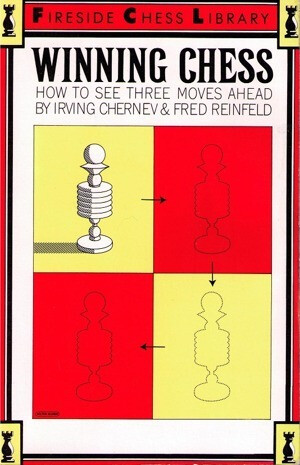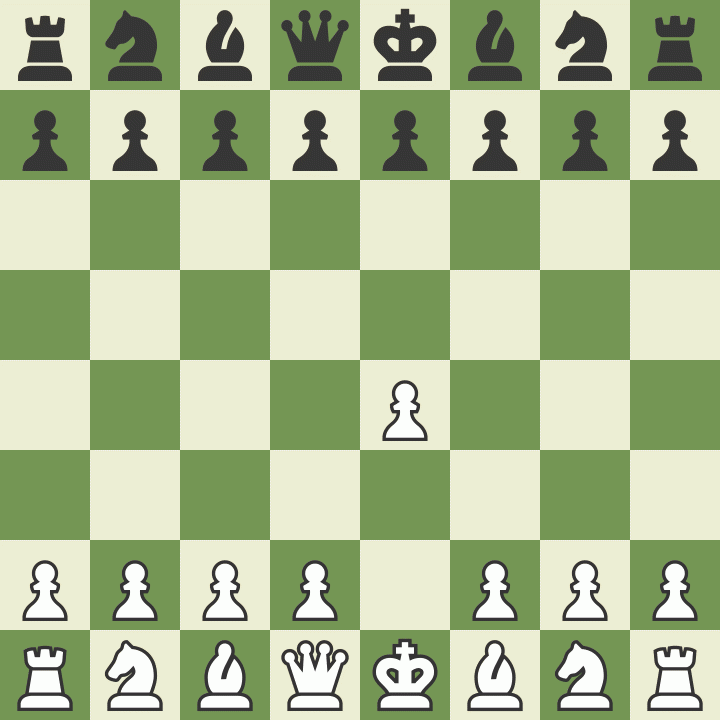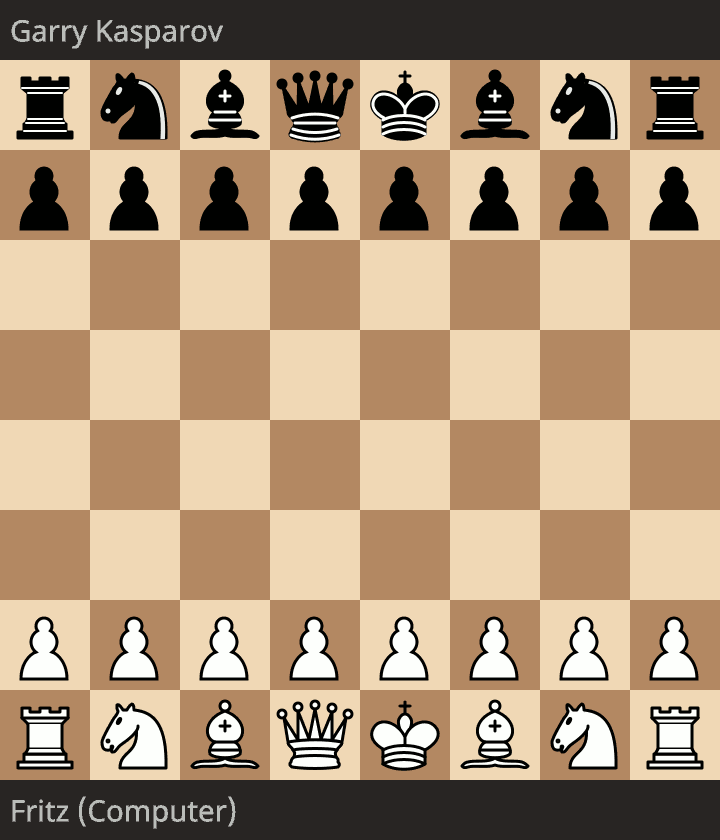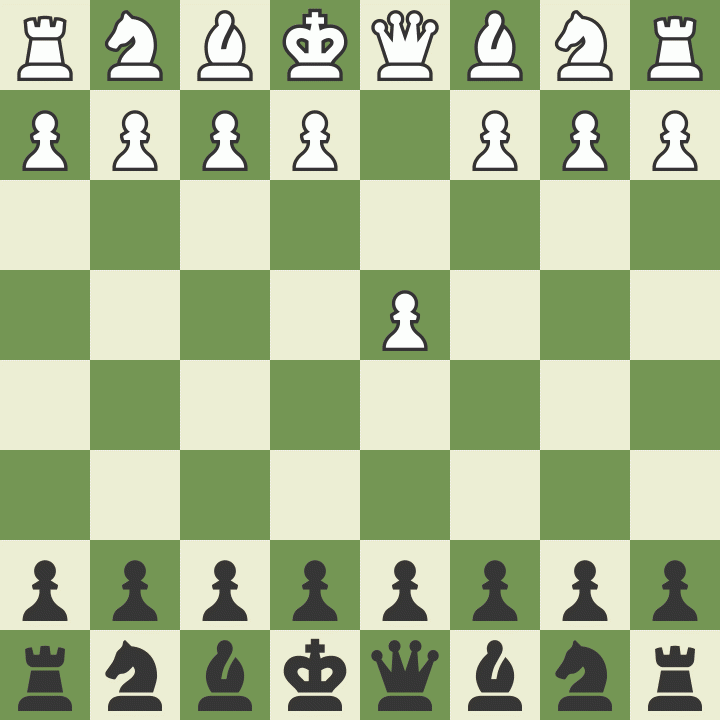Both these posts have basically inspired me to give up since I have no idea what anyone is talking about. Pinning makes sense at least.
Playing my first game in years against a friend and trying to remember the basics from The Queen’s Gambit.
Both these posts have basically inspired me to give up since I have no idea what anyone is talking about. Pinning makes sense at least.
Playing my first game in years against a friend and trying to remember the basics from The Queen’s Gambit.
Well then I withdraw my post.
Don’t be intimidated by the names. If you look at some simple examples the ideas will be clear. In the position below, white wins a piece by advancing his pawn to attack the black knight and bishop at the same time. It’s an example of a fork, an attack in two directions at the same time. Black can only save one of his pieces.
I keep my boards rolled with the squares on the outside, and I keep them in a Staples cardboard mailing tube I cut down to size.
Mailing tube is a good idea. I might pick one up the next time it is convenient.
I just set up a perfect move and then blew it lol. My friend told me I set up a “discovered attack” where I could’ve taken his bishop for free and he couldn’t respond because I could take his queen but instead I just moved the piece that would’ve taken the bishop.
I’m registered on lichess if anyone wants to play. If I know you’re better than me I won’t care as much about getting wrecked.
I think it was Chessmaster 9000 that had an amazing series of video lectures that explained basic ideas like pins and such, taught me basically all I know of chess. Which is not much, granted. idk if anyone’s ever made an updated version of that.
There must be online resources for learning basic tactics. I learned from this book. Immediately made me better than most of my school club opponents.

Lichess is good for this too, my rating is not high but it always finds people that are about the same rating for me to play.
Not always, no. It’s a mistake to always seek x-ray pins. Good generalisations in chess are few and far between, and this one is a bit like the advice often given to beginners that doubled pawns are bad - often true but also often false.
The example you gave happens to be good because it starts to create a threat of winning black’s e pawn which is defending black’s centre, which is interestingly a mirage now because Bxc6 dxc6 Nxe5 is met by Qd4 winning back the unprotected e pawn.
The threat only materialises after white has protected his own e pawn. In this gif white has finally protected his own e pawn with his rook, and is now threatening the aforementioned combination, so black’s next move will be b5 to prevent it, which itself has the disadvantage of creating pawn weaknesses on black’s queenside (white often seeks to undermine this with a future a4 after his bishop has retreated).

Also the advice about trying to move your central pawns as first moves has many exceptions.
I mention all this because it took me years to realise that the generalisations I was told when learning the game had so many exceptions that made them harmful to my development as a player.
There are interesting similarities with other disciplines. Chess is a mixture of science and art, and the concept of needing to learn the ground rules first so that later you know when and how to break them is one that occurs in artistic fields eg composition and the rule of thirds.
In this case what you’ve described is a classical (ie pre-Modernism) view of the opening as a battle to occupy the centre with pawns, which is often but not always good for the side winning that battle - but people came to realise that allowing your opponent to build a centre that you can then undermine is equally often an effective strategy - see the games of Fischer and Kasparov as black against 1 d4.
How to beat a machine that’s playing according to classical principles: give it the centre and exchange queens even if it means moving your king twice in the opening! Rules are there to be broken…

OK I have lichess and chess.com accounts if anyone novices want to play, chess.com is same name as on here. Can PM for lichess since I foolishly used some of my real name in it.
Watch John Bartholomew “chess fundamentals” videos on YouTube. There are four videos, each maybe an hour long. Basically zero theory, just teaching basic chess stuff. It’ll make you a much better player.
When you’re done with those if you still want some more content watch either JB’s “climbing the rating ladder” series or Daniel Naroditsky’s version of the same thing. Again, very little theory, just really useful step by step thought patterns in games against lower ranked players.
Thanks that’s helpful, I will check them out.
Does anyone have an opinion on paying for premium at chess.com? I want to dick around with some of the tools like puzzles and openings but they’re very limited in the free version. It’s $30/year for the lowest subscription which might be worth it but also might be able to get better tools for free.
Played this exact game twice in like 6 games. Lulz

Lev Aronian is switching federations and will begin playing for the US in 2022:
https://www.chess.com/news/view/levon-aronian-armenia-united-states-st-louis
I’m trying to get just halfway decent at chess. I’m most of the way through the chess.com lessons and I’ve been doing a lot of puzzles hoping the repetition helps me start seeing these opportunities in an actual game at some point. Where I feel most clueless is the opening, so I figure I’ll make a real effort at learning the more popular ones and continuing the puzzles. Good plan?
With the puzzles it’s very common for me to not see the advantage I have but eventually figure it out only because I know it must be there, otherwise it wouldn’t be a puzzle. My only aspiration at the moment is to start seeing these spots in a real game against the computer.
FWIW I found it useful, using it mostly for move-by-move post-game analysis. I think you get 2 or 3 free per day but when I was playing a bunch of games I liked being able to analyze each one. I went through a few of the opening explorers too, which was fun but not that helpful for a poor player–most of my losses are due to mistakes or blunders, so it’s valuable to see what those are.
Now I’m barely playing and it’s going to waste but oh well.
I agree with ChrisV that opening preparation will not get you very far. It’s incredibly difficult to memorize thousands of main lines and deviations. A position also always has some reasonable moves that won’t be covered by your preparation but let’s say you can 15+ moves of theory and end up in an advantageous position then you still have to convert your advantage to a win. This takes some actual still.
In terms of order of importance and increased win percentage I’d go with
1.Tactics
2.Tactics
3.Tactics
4.Endgames
5.middle game concepts
6.openings
I totally agree. I am not very good, so I play low level chess. Other people at my level don’t know opening theory either, so there’s no point remembering opening lines 8 moves deep when your opponent is doing random shit on move 3. If you can’t reasonably expect your opponent to make sensible moves then the number of permutations across all possible moves is too large. You’re going to be “off script” most of the time and relying on fundamentals and tactics anyway.
I also got objectively better when I started using the “learn from your mistakes” function in Lichess. Play 100 games against the computer and then go through them to correct mistakes and you will program yourself to make more solid moves early on without having to memorize opening theory.